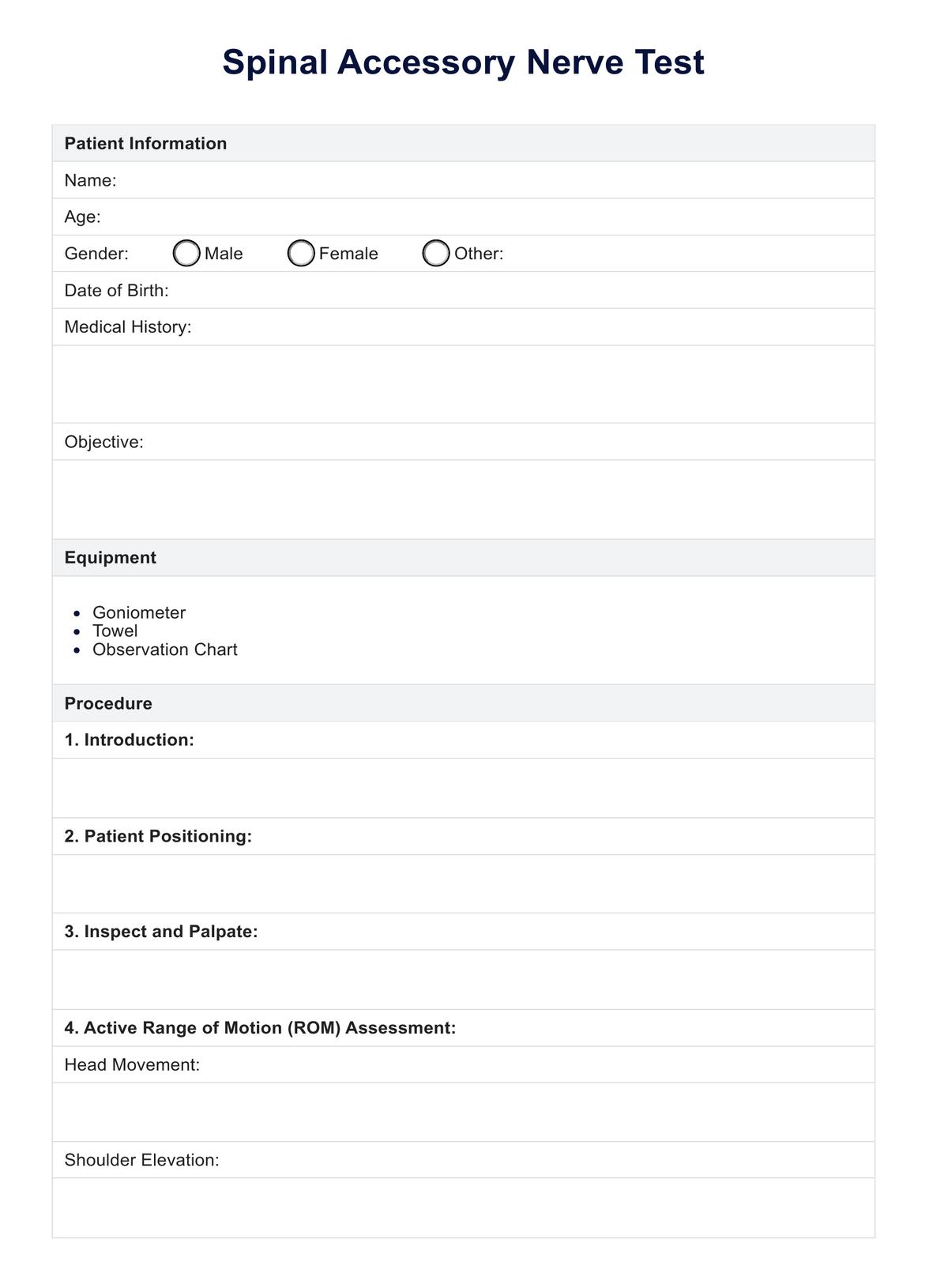To test for spinal accessory nerve damage, healthcare professionals conduct a spinal accessory nerve test, assessing the strength and coordination of the sternocleidomastoid and trapezius muscles. Impaired movements during head rotation, tilting, and shoulder actions may indicate potential nerve damage.

Spinal Accessory Nerve Test
Discover how to conduct a Spinal Accessory Nerve Test with our comprehensive guide and example. Download a free PDF from Carepatron for reference.
Spinal Accessory Nerve Test Template
Commonly asked questions
Identifying spinal accessory nerves involves neurological examinations and imaging studies such as magnetic resonance imaging (MRI). Skilled healthcare professionals assess the nerve's integrity through clinical evaluations, focusing on the patient's ability to perform specific head and shoulder movements.
Accessory nerve function is assessed through the spinal accessory nerve test, evaluating the strength and coordination of the sternocleidomastoid and trapezius muscles. Healthcare professionals observe the patient's ability to perform controlled head rotations, tilts, and various shoulder movements against resistance to determine the nerve's functionality.
EHR and practice management software
Get started for free
*No credit card required
Free
$0/usd
Unlimited clients
Telehealth
1GB of storage
Client portal text
Automated billing and online payments











